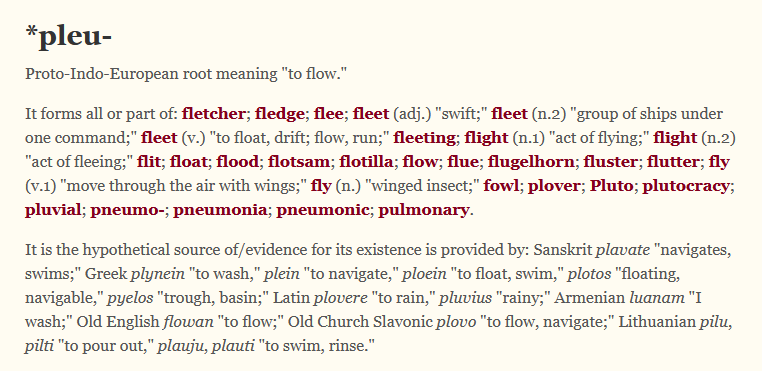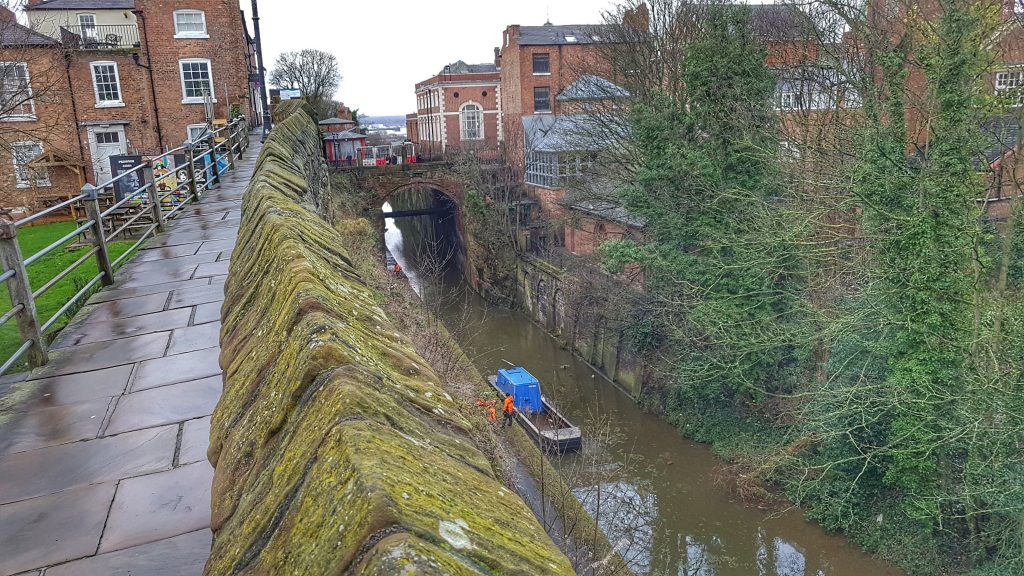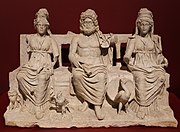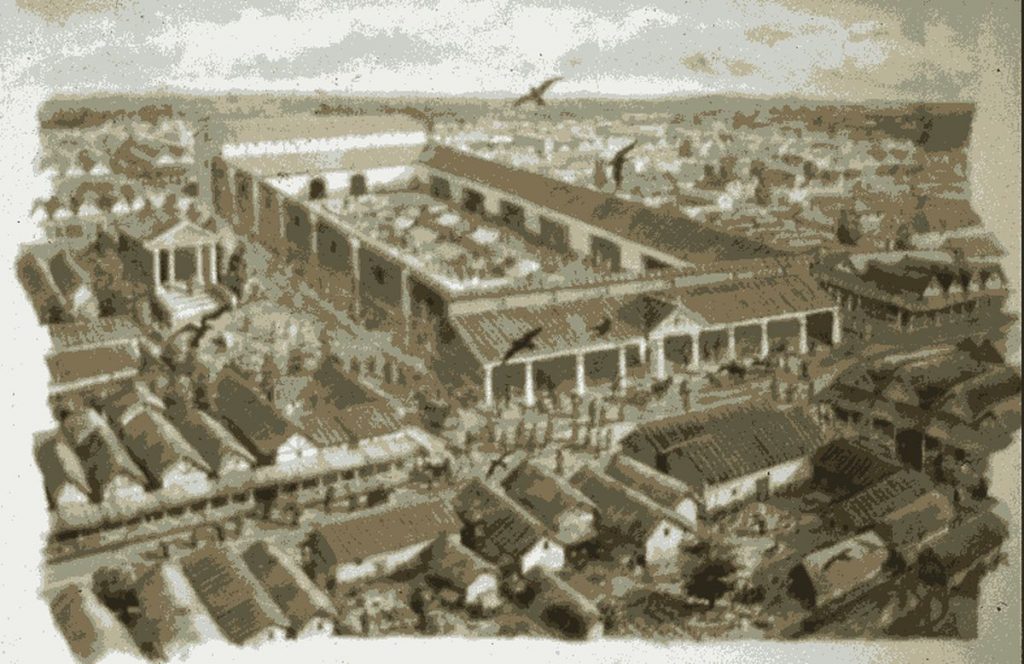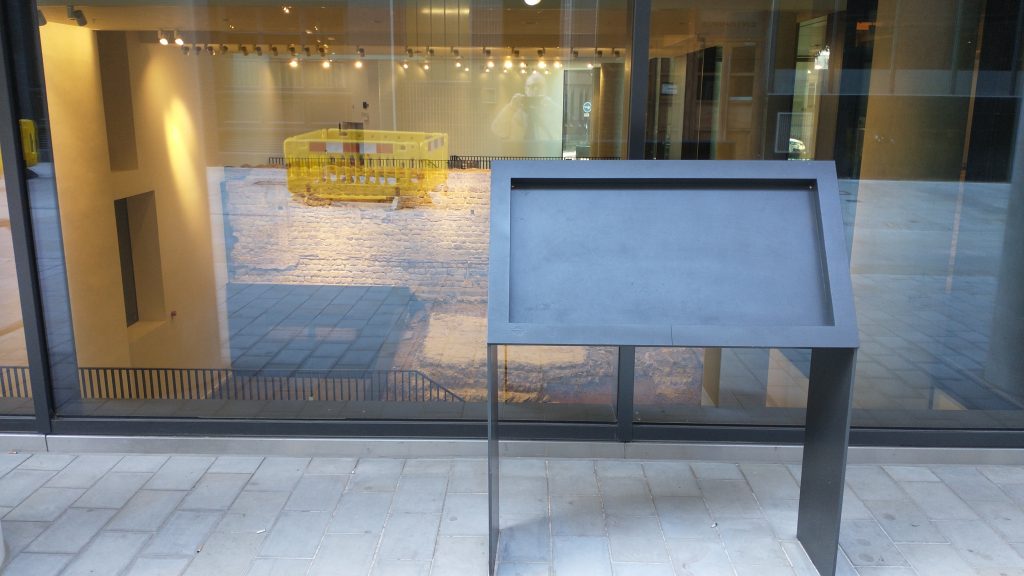
I often walk past Crosswall; a street in the east of the City of London that cuts right across the line of the Roman and Medieval City Wall from Aldgate to the Thames at the Tower of London. Several sections of the wall are still standing in this section – in Cooper’s Row and Tower Gardens behind Tower Hill Tube station, but this is the only Roman Bastion on display.
I, briefly, worked on the site in Crosswall that uncovered this Bastion. It was in the 1970’s in an excavation led by John Maloney. I remember, particularly, the entertaining tea breaks which John led. At the end of the excavation the developers decided to keep the remains and put them on display. This is quite unusual sadly. I visited the remains once or twice or my guided walks and always mention them but it never seemed an absolute necessity to visit probably because the display was not so inspiring or difficult to access. I can’t remember in fact how accessible the remains were.
A couple of months ago I found myself in Vine Street and was surprised to see the bastion through a clear plate glass window. This week I went again for a proper look and was really pleased to see what a great job has been made of the redisplay. The building that was put up after our excavation has been pulled down and a modern new glass building stands in its stead. When I visited they were hoovering it and preparing the display – not yet having put in the information in the information holders, but obviously soon to be launched to the world.
Now you can see the Chalk Bastion foundations and also a good section of the Roman City Wall. But not only from one side but both inside and outside the City. The Wall was built around 200 AD, the Bastion was added in the late Roman Period in the late 4th Century. Romans used them to place a catapult called a Balista. The Crosswall excavation was, I think, the first modern (post 1970s) excavation of a Bastion. You can find it between Crutched Friars and Vine Street north of Crosswall.
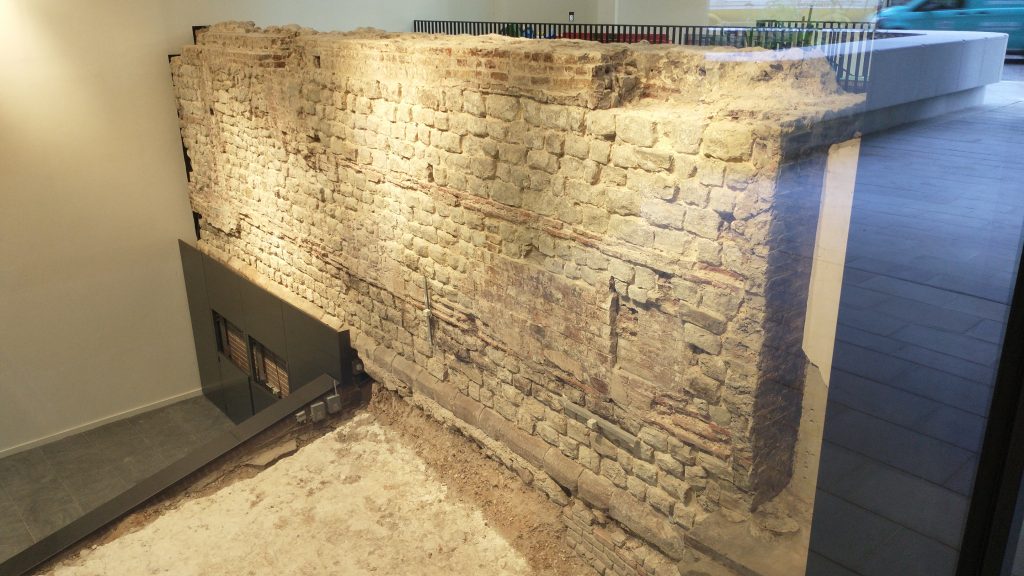
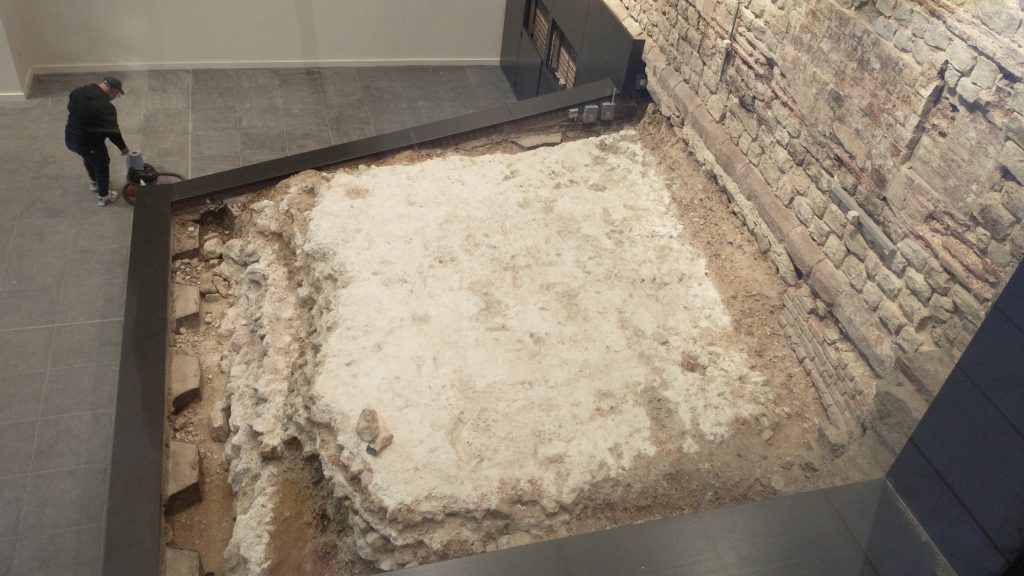
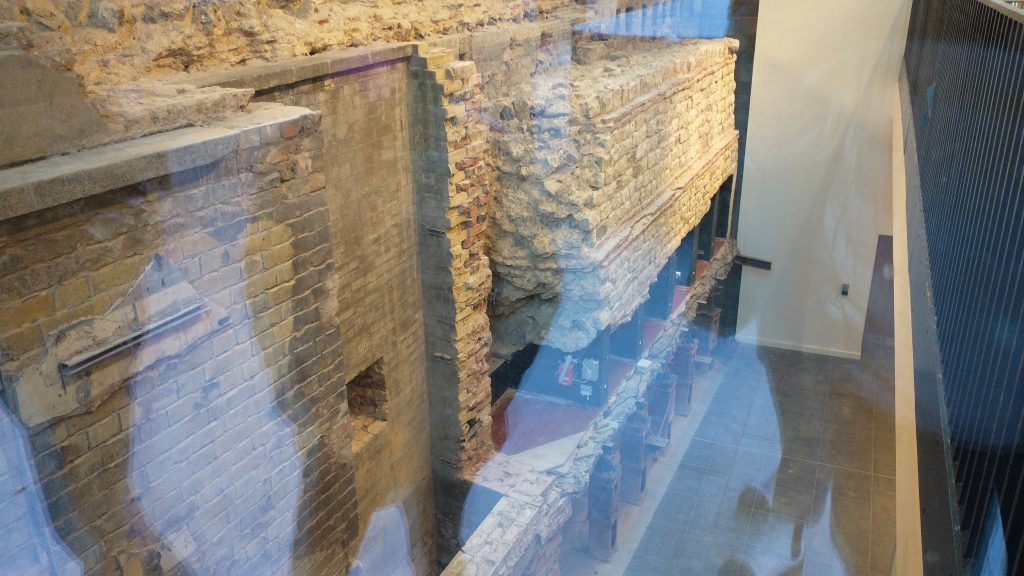
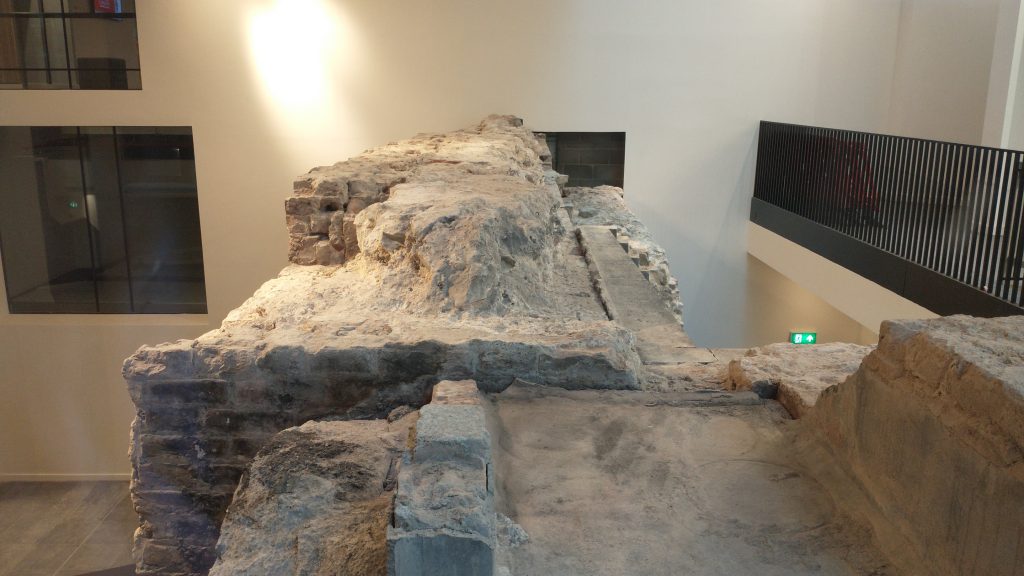
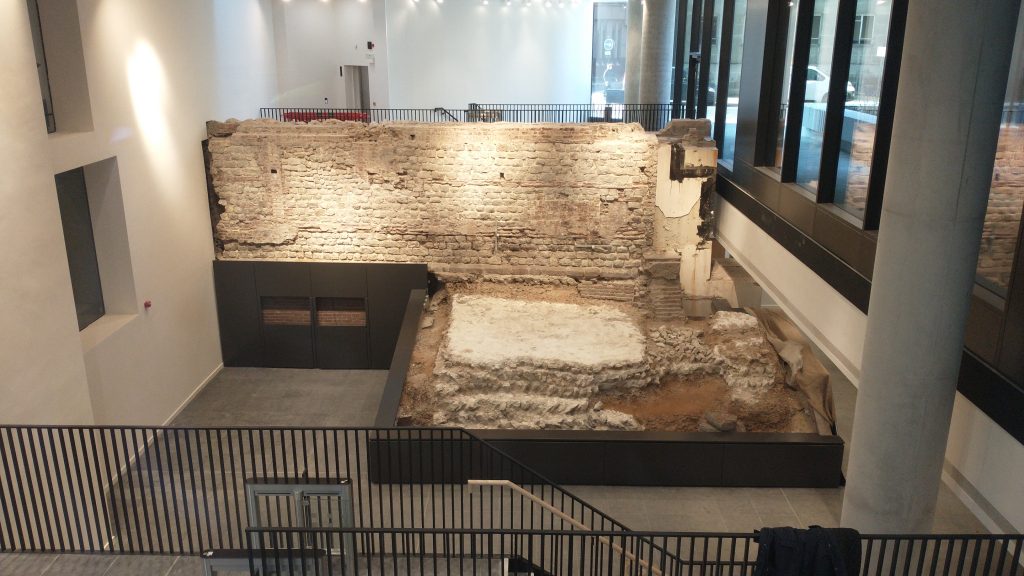
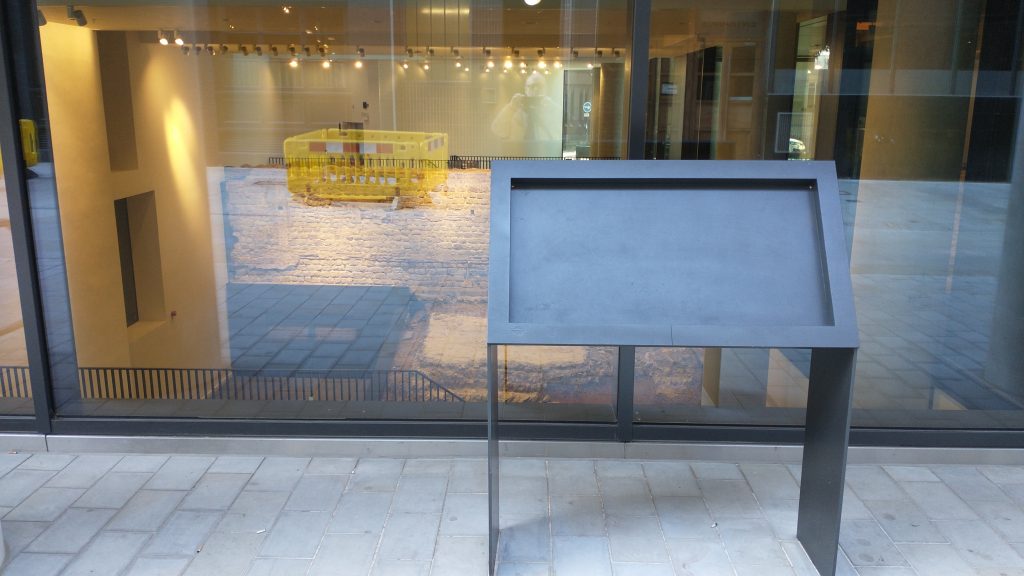
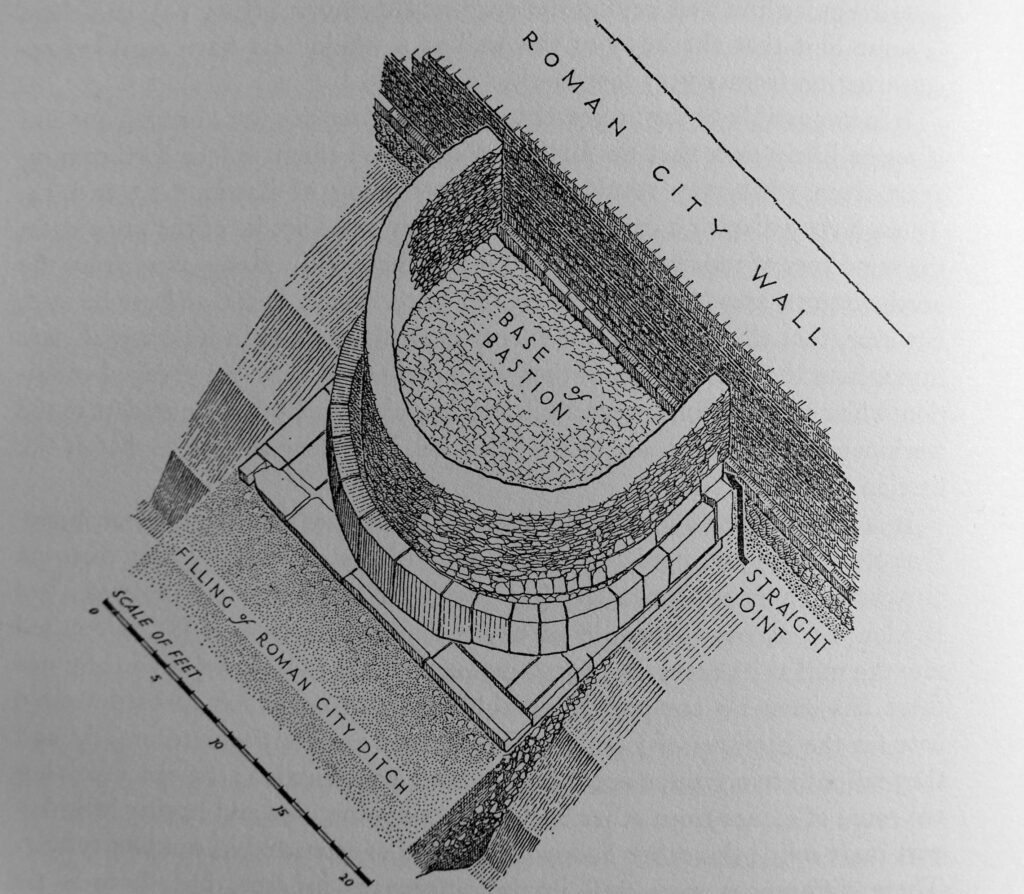
I have republished my post of the Chinese New Year which you can see here:

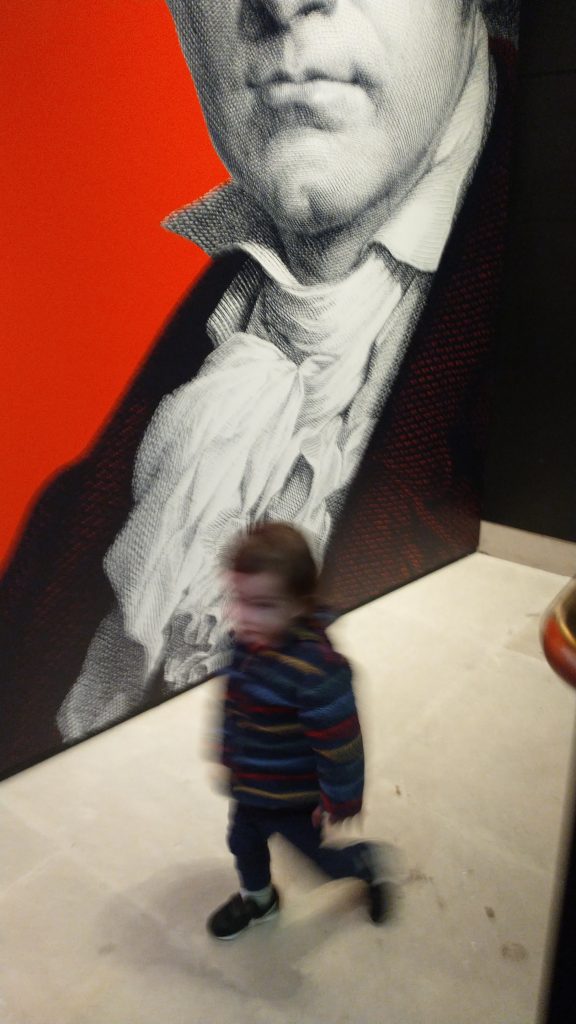
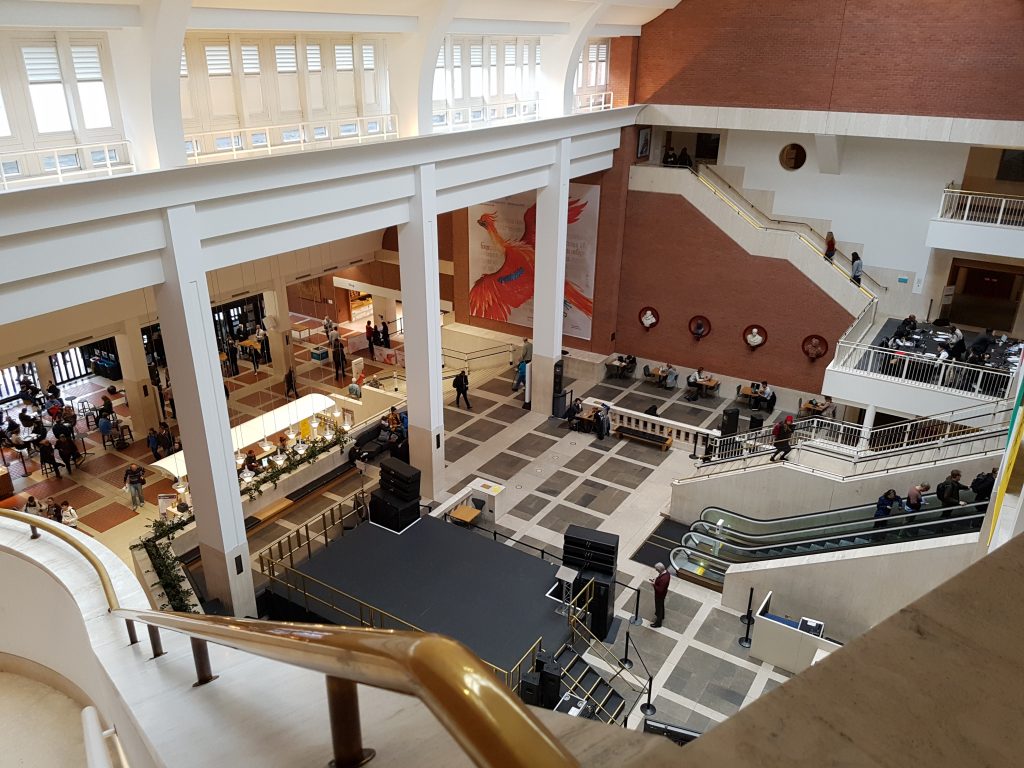
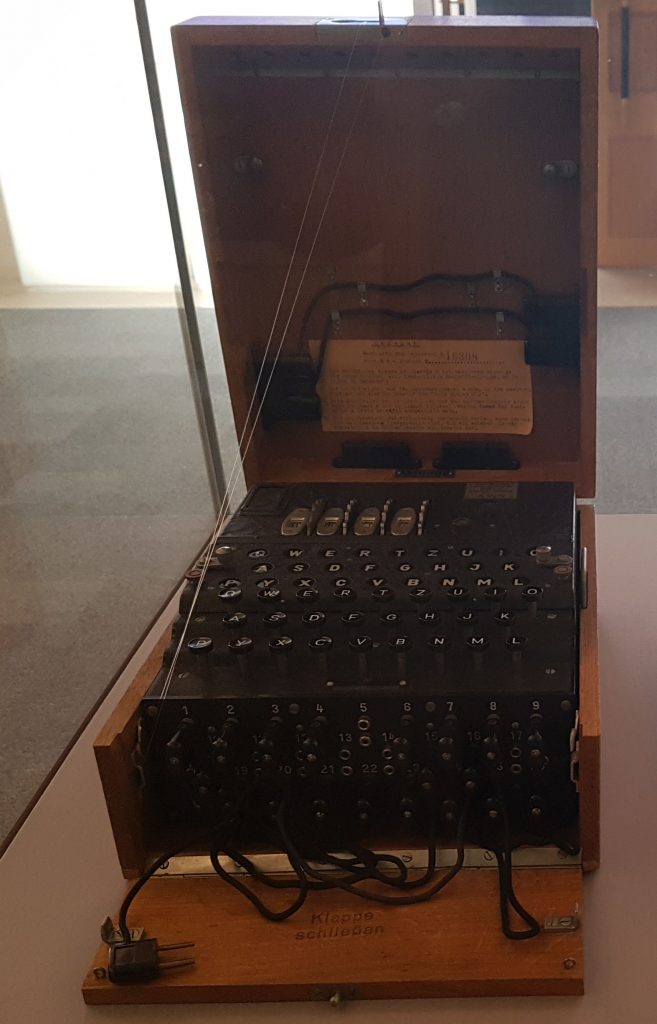
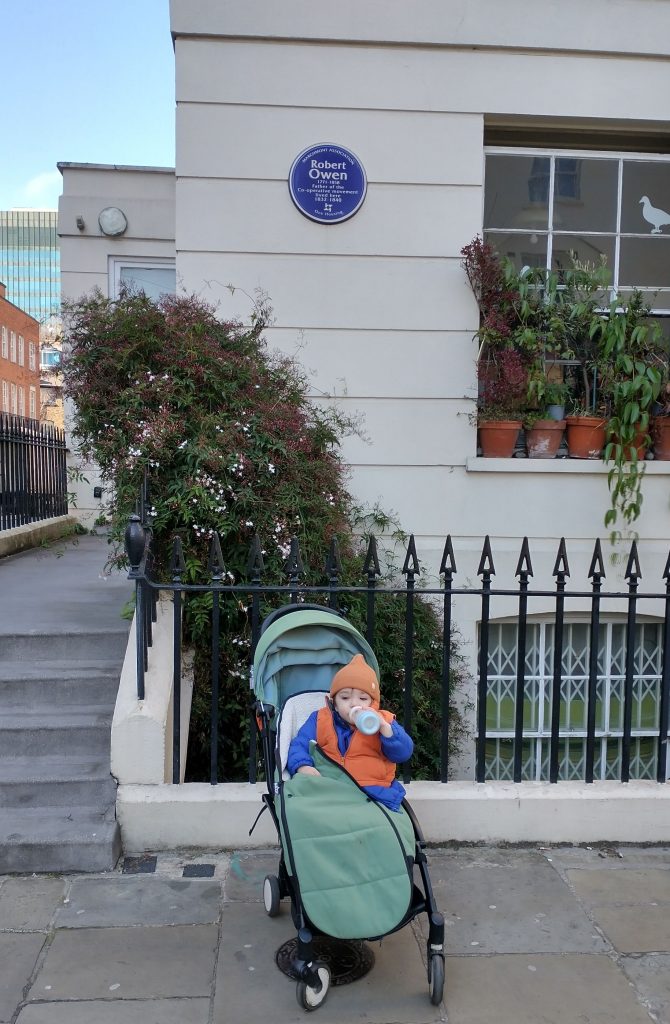
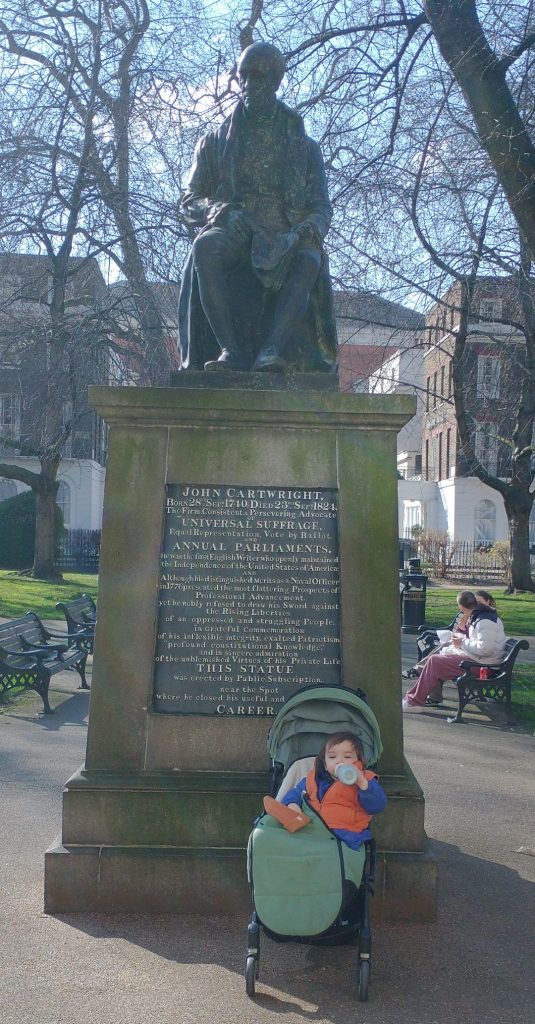
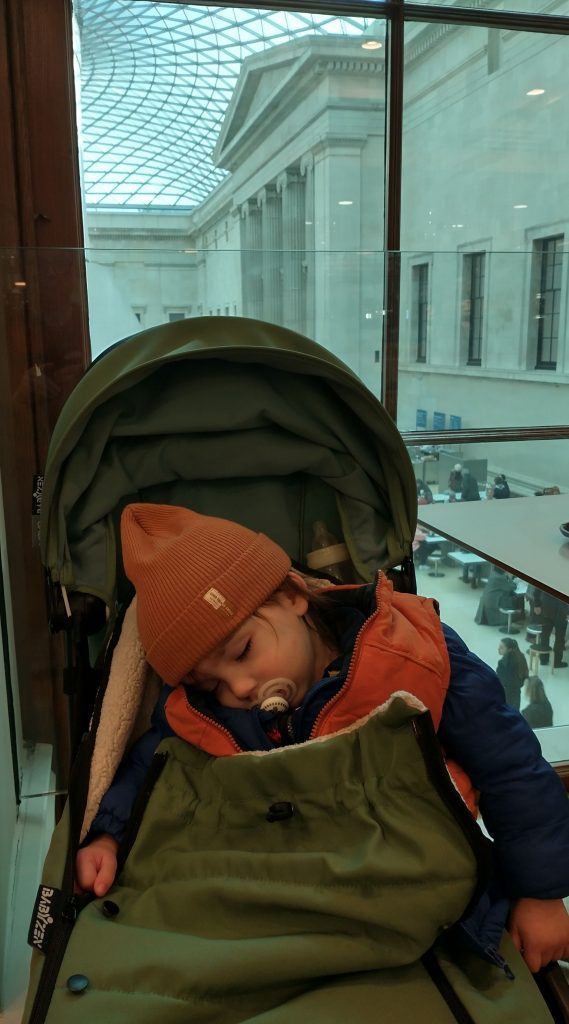
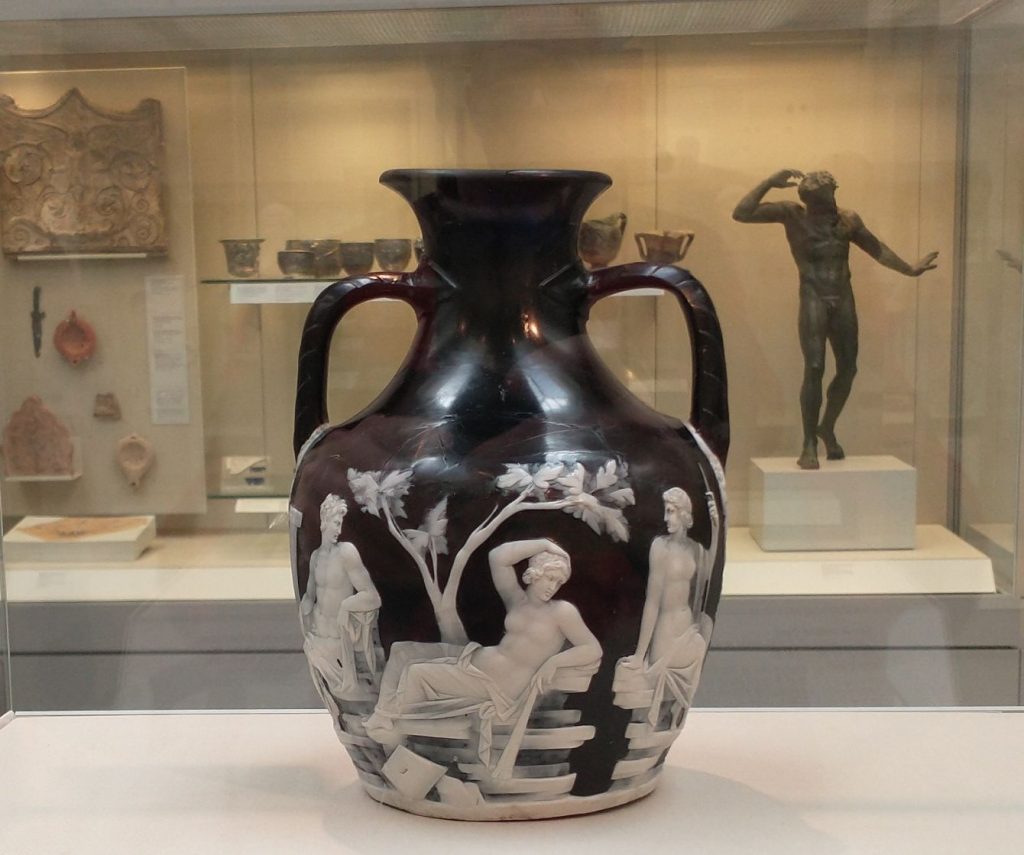
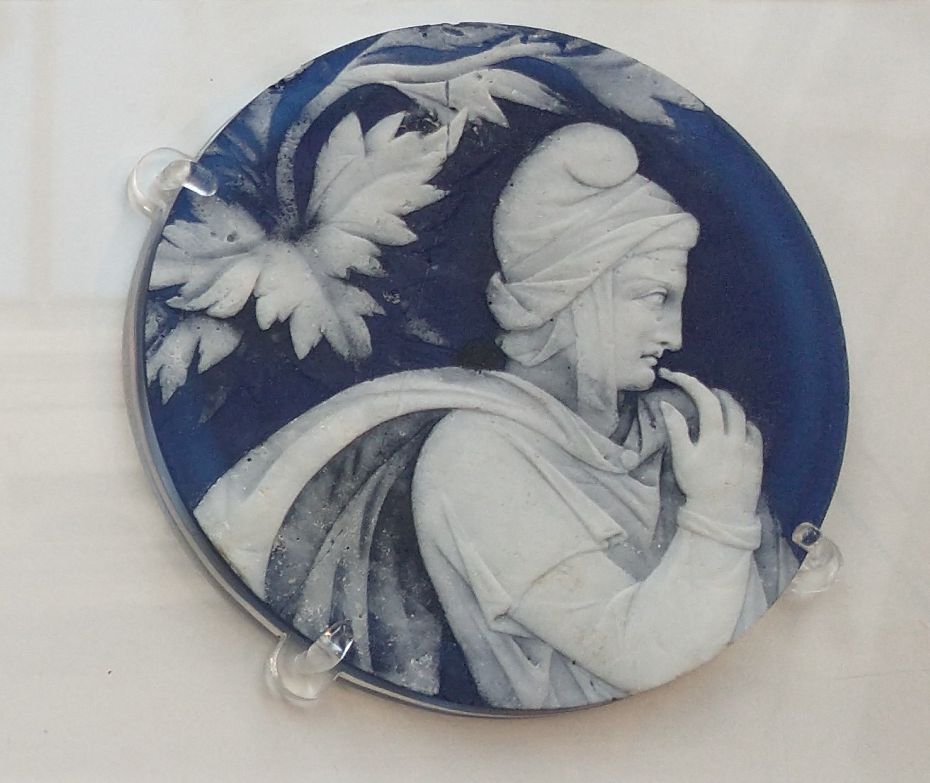
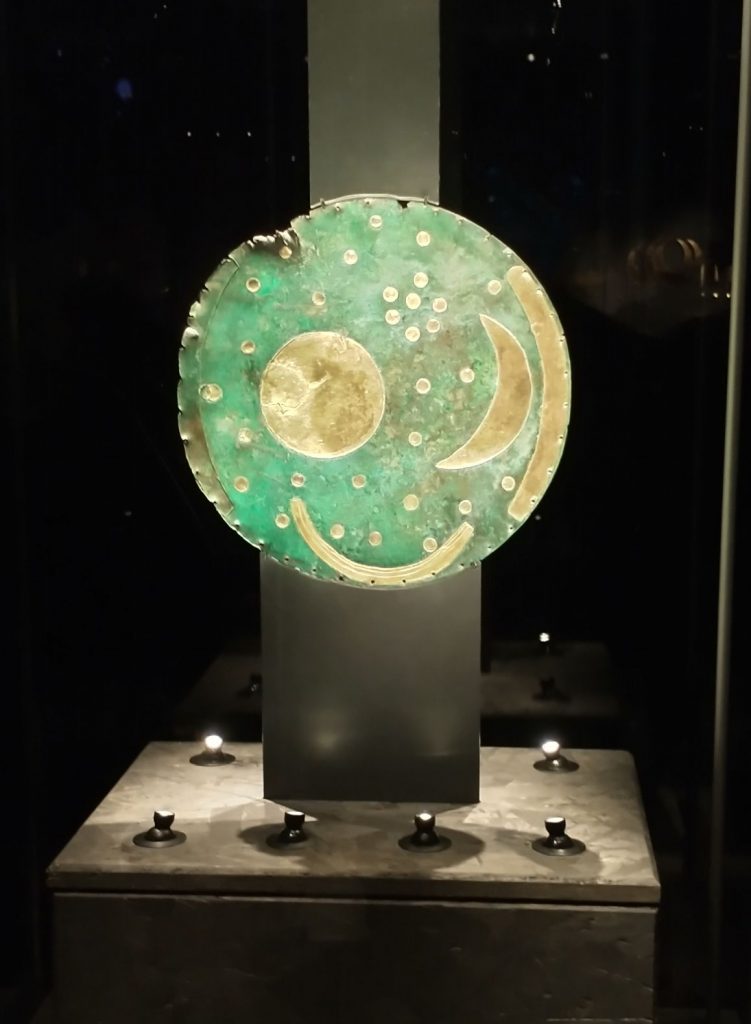












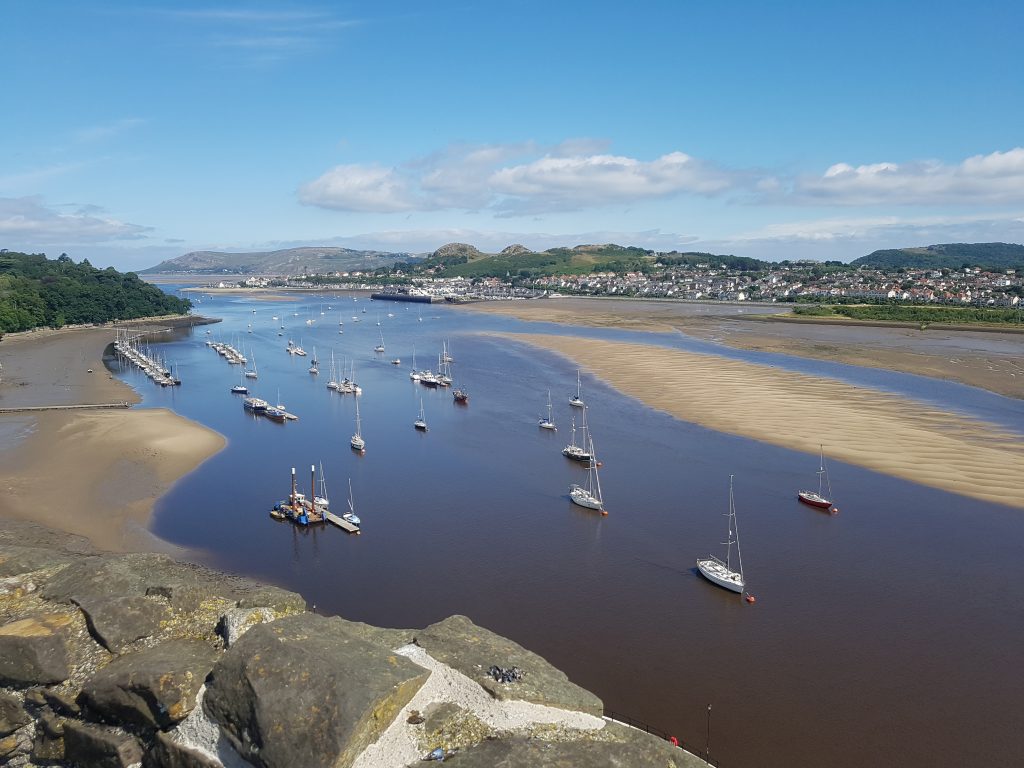
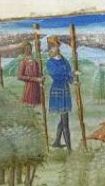
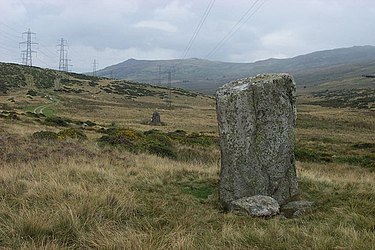
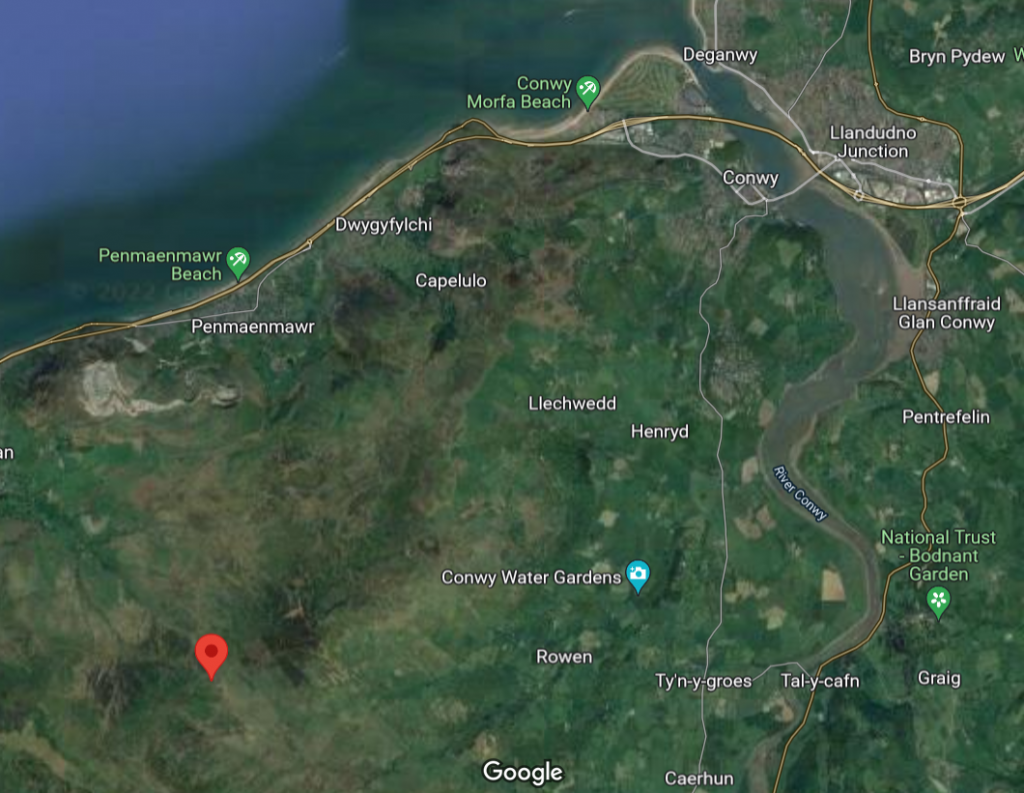
 long, is the largest found in London for over fifty years and dates to the late second or early third century.
long, is the largest found in London for over fifty years and dates to the late second or early third century.
